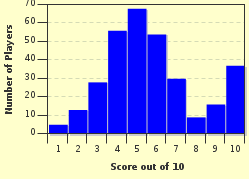Quiz Answer Key and Fun Facts
1. Substrate level phosphorylation can occur both in aerobic and anaerobic environments.
2. The Embden-Meyerhof and Entner - Douderoff pathways are two related pathways that are also called _________?
3. The tricarboxylic acid (AKA Kreb's or Citric Acid) Cycle converts acetate to carbon dioxide and NADH in a series of reactions that convert six carbon compounds to five carbon then to four carbon compounds. Oxalacetate, a four carbon compound, rejoins with acetate (a two carbon compound) to start the cycle again. Which of the following compounds is NOT associated with the cycle?
4. Which of the following compounds are electron acceptors used in anaerobic respiration?
5. When a bacterium oxidizes inorganic compounds as its source of energy while utilizing carbon dioxide as its sole source of carbon, it is said to be which of these?
6. Some bacteria are both chemolithotrophic and chemoheterotrophic.
7. Which of the following is the most common pathway for carbon dioxide fixation in chemolithotrophs?
8. In which environment may you find a methanogenic archaebacterium employing the acetyl- CoA pathway?
9. Back to heterotrophy. When a bacterium is utilizing two or three carbon organic compounds as its carbon source, the tricarboxylic acid cycle cannot alone regenerate oxaloacetate when carbon is drawn off for biomass production. In order to grow on two or three carbon compounds, some bacteria supplement the tricarboxylic acid cycle with the:
10. Under which condition might an obligately aerobic bacterium utilizing glucose as its sole source of carbon begin to accumulate significant amounts of acetate in its medium?
Source: Author
gakerty
This quiz was reviewed by FunTrivia editor
crisw before going online.
Any errors found in FunTrivia content are routinely corrected through our feedback system.

